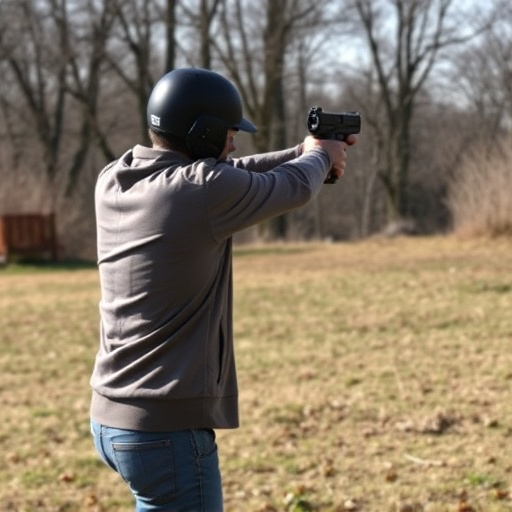Unveiling Stun Gun Risks: Detection Challenges & Solutions for Safety
Stun guns, despite their non-lethal intent, pose neurological risks including memory loss and cognit…….
Stun guns, despite their non-lethal intent, pose neurological risks including memory loss and cognitive impairment due to electrical discharges disrupting muscle and nervous system functions. As stun gun popularity grows, understanding these side effects is vital for responsible use. Advanced detection methods like imaging technologies and behavioral cue recognition training are needed to overcome concealed stun gun detection challenges. Additionally, mitigating stun gun side effects requires safe handling practices, clear deployment guidelines, and developing countermeasures based on neurological impacts.
In today’s uncertain times, concerns surrounding concealed stun gun detection are on the rise. This article delves into the critical issue of stun gun neurological side effects, exploring the risks associated with these powerful self-defense tools. We examine hidden detection challenges and offer practical solutions to enhance safety for everyone involved. Understanding the potential consequences is paramount, especially as these devices gain popularity. Get ready to navigate this complex topic and stay informed about the latest advancements in personal protection.
- Stun Gun Neurological Side Effects: Understanding the Risks
- Concealed Detection Challenges and Solutions for Improved Safety
Stun Gun Neurological Side Effects: Understanding the Risks

Stun guns, while designed as non-lethal weapons, can have significant neurological side effects. When activated, stun guns emit an electric current that disrupts muscle control and causes temporary paralysis. However, this electrical discharge also impacts the nervous system, potentially leading to a range of adverse effects. Studies suggest that prolonged or repeated exposure to stun gun shocks may contribute to long-term neurological issues such as memory loss, cognitive impairment, and balance disorders. Individuals with pre-existing conditions like epilepsy or cardiovascular problems are particularly vulnerable, as the electrical current could trigger seizures or other severe reactions.
Understanding these risks is crucial given the increasing prevalence of stun guns in both personal and professional settings. Law enforcement agencies, security personnel, and even civilians carrying stun guns should be aware of potential side effects to ensure responsible use and prompt medical attention if necessary. Regular training on safe handling practices, along with clear guidelines for when and how to deploy a stun gun, can help mitigate these risks while maintaining the tool’s effectiveness as a last resort for self-defense.
Concealed Detection Challenges and Solutions for Improved Safety

Concealed stun gun detection presents unique challenges in ensuring public safety. These devices, designed to incapacitate with a powerful electrical shock, can be easily hidden on individuals, making their presence difficult to discern. Traditional metal detectors and pat-downs may not always detect these non-metallic weapons, leading to potential risks for security personnel and the general public alike. The lack of visible cues makes it crucial to employ advanced detection methods.
One approach to tackling this issue is by utilizing advanced imaging technologies that can penetrate clothing and identify suspicious items based on their shape and electrical properties. Additionally, training security personnel in recognizing subtle behavioral changes that might indicate weapon possession, coupled with continuous updates on the latest stun gun designs, can significantly improve detection accuracy. Addressing the neurological side effects of stun guns, such as temporary disorientation and muscle weakness, also plays a vital role in understanding their impact and developing effective countermeasures for enhanced overall safety.
As we’ve explored, stun guns pose significant neurological risks that cannot be overlooked. While they offer a sense of personal safety, the potential side effects demand greater awareness and concealed detection solutions. Advancements in technology and public education are crucial steps towards ensuring individuals can protect themselves effectively while minimizing associated dangers. By addressing both the risks and challenges, we can work towards creating safer communities for all.


